Features of choosing and creating a foundation in a swamp
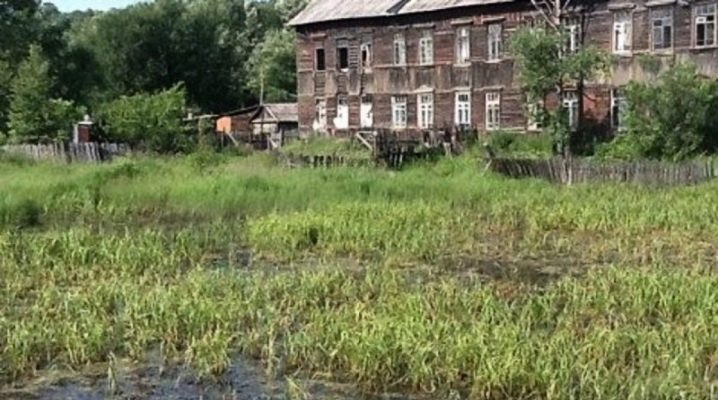
Organic soils, among which are waterlogged, are considered the least suitable for capital construction. This is due to the high moisture saturation of the soils, their looseness, and a tendency to deformations. However, modern technologies for the construction of the foundation make it possible to achieve the stability of the structure and its durability, even in swampy areas.
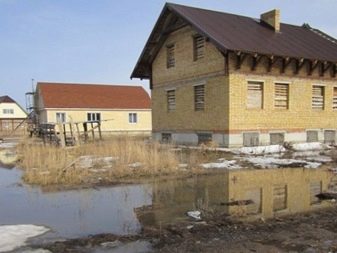

Peculiarities
A feature of swampy soils is a tendency to deformations, instability due to a large number of fine-grained particles, and high moisture saturation indicators. During the off-season, such soils are subject to strong heaving, and in winter - to freezing. The high moisture content in the soil causes the formation of dangerous quicksands. All this becomes the reason that the soils are weakly resistant to compression, and it is necessary to look for non-standard solutions to the foundation structure.
In each case, the decision in favor of a particular system is made on the basis of soil analysis., soil layers directly under the construction site, water table. The method of drilling wells is used as a way to obtain the necessary data. It is recommended to do them in winter, when the moisture saturation of the soil is at its maximum.
A feature of building a house on swampy soils is not so much the difficulties associated with the technical difficulties of construction, but the laboriousness of conducting geological surveys, organizing drainage and other additional work.
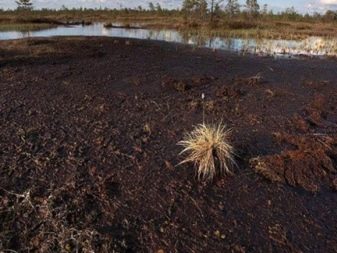
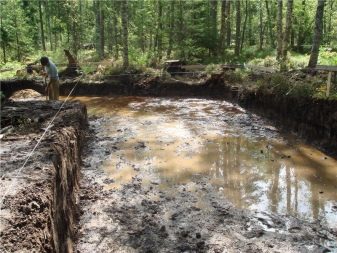
All types of highly compressible soils are classified as swampy:
- clay soils with a porosity of about 52% and loams with a similar indicator of more than 50%;
- loose sandy soils and sandy loam, characterized by high water saturation and porosity over 41%;
- peat (containing less than 50% organic soils) clay and sandy soils;
- sludge - highly porous (up to 60% porosity) soil containing a large amount of moisture and formed under the influence of microbiological processes in water bodies;
- sapropel is a type of sludge containing a high percentage of moisture, having porosity values of more than 75%, containing less than 10% of organic components.
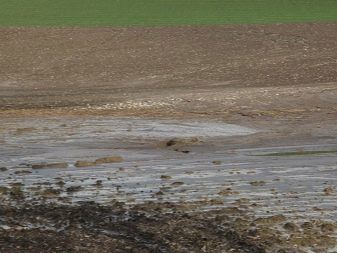

Under a highly compressible boggy soil, there is always a slightly compressible soil suitable for construction.
Several systems of foundations are most widespread in wetlands.
Strip foundation with powerful drainage from the basement and drainage
In some cases, this type of foundation can be used on swampy soils with a high content of coarse sand, provided that there are no aquifers under the foundation, as well as springs and other sources nearby.
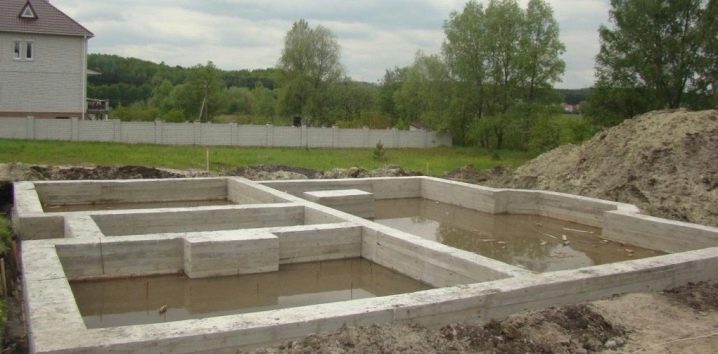
Pile foundation
Most often, this type of foundation is the only possible option for swampy areas. It is suitable even for soils that are eroded to a moist slurry state. In such cases, the piles rest on solid layers of soil at the bottom of the swamp.
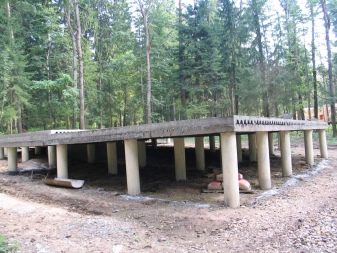
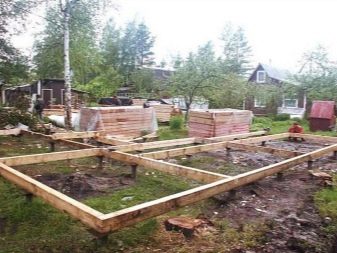
Floating foundation
It is a monolithic slab that is able to change position along with the soil, but not deform. Due to the design features, such a system has another name - slab base.
Suitable for unstable viscous and dense soils, but only on condition that they are not flooded by seasonal floods or precipitation.
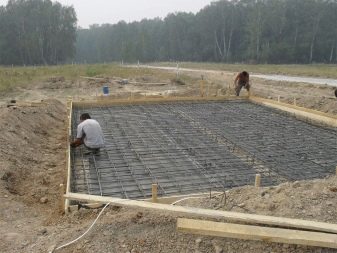
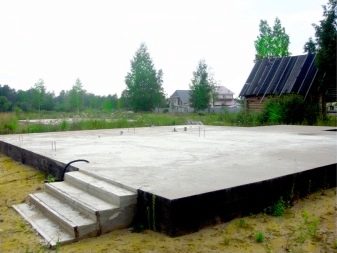
Installation features
Regardless of the chosen technology for the construction of the foundation, its installation on weak, moving layers is unacceptable.
To strengthen them, resort to the following methods:
- peat extraction - that is, replacing weak (prone to heaving) soils with a non-heaving layer, for which, under the foundation, part of the moving layer or its entire thickness is replaced with a pillow of denser layers;
- compaction of soil under the base;
- creation of an embankment from non-porous soils for the construction of a foundation on it.
When creating a foundation in a swampy area, it is important to make the foundation in such a way as to reduce the specific pressure of the object on the ground and thereby prevent its settlement.

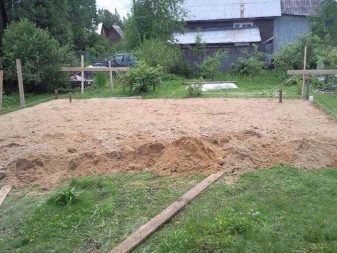
With all the variety of construction options, a thorough analysis should be carried out. It is better to draw up several drawings and estimates for different options for the structure. As a rule, for the same area, you can choose at least 2 design options, for example, make a peat to the full depth of soft soil and install a strip foundation, or create an embankment and combine it with a pile foundation. Design documentation will allow you to see the strengths and weaknesses of each technology, the cost of objects and make the best choice.
It is important what material the house is built from. For the type of soil in question, it is better to use lightweight building materials. Erection of a support under a wooden house, a frame object will be cheaper and less laborious.
In addition, the elasticity of the wall material should also be taken into account - with possible deformations of the soil, wooden structures will preserve their integrity to a greater extent than, for example, brittle aerated concrete.
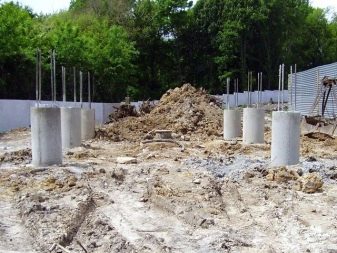

Strip foundation
Usually, owners of plots located in the floodplain of a river or a lowland resort to its construction, therefore, waterlogging of soils is associated with the proximity of a water source.
As a rule, in this case, a classic strip foundation is used, performing the following types of work before its installation.
- organization of a powerful drainage system with the help of hydrodrainage barriers, preventing the penetration of moisture into the site;
- the perimeter around the foundation should be equipped with highly efficient soil drainage, making sure that this system is adjacent to the foundation.
For construction, you should choose the highest point of the site. At the stage of geological surveys, you should make sure that there are no underground springs characteristic of such an area. If such are found, the use of the strip foundation should be abandoned.
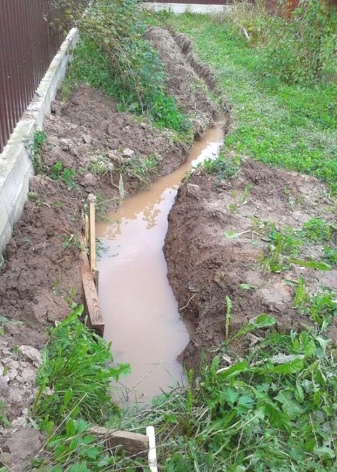
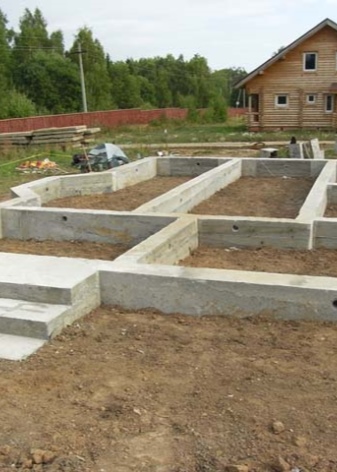
But even if such sources are not found, only small one-story houses, mainly made of wood or analogs of the frame type, can be erected on a swampy area under a strip foundation.
After digging a trench, you should first create a sandy, and then an unpaved (from non-porous soil) "pillow" in it, organize the formwork, which should be poured with concrete mortar. It is unacceptable to use a strip foundation made of blocks in a swamp.
If the house is built from concrete blocks, then the masonry is reinforced, and a monolithic reinforced concrete belt is installed at the level of the floor overlap.

Pile foundation
Suitable for the construction of even large (one or two storey) houses made of heavier materials (cellular blocks, brick, hollow stone) in a swampy place. This property is due to the high bearing capacity of reinforced concrete foundations, which rest on rocky or solid layers of soil, usually located at the bottom of the swamp. With differences in the height of the relief, bases of different heights are used.
As a rule, the depth of laying the supports is at least 6-7 m., bored technology is used. This means that it will not be possible to do the installation with your own hands, it is necessary to attract special equipment.This factor, as well as a number of others, determines the higher cost of the pile foundation in comparison with the strip foundation in swampy areas. On solid soils, the strip foundation is significantly superior to the pile foundation in terms of its labor intensity and cost.

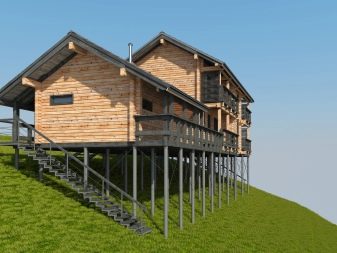
In rare cases, the depth of the solid soil layers is 2-3 m, then instead of bored piles, screw piles can be used. They have a lower cost and can even be assembled with your own hands.
When organizing a pile foundation, the upper layer is usually removed to a depth of 60-70 cm, and road geotextiles are laid instead. The latter is filled with a sand-crushed stone mixture. The pile heads are connected with a grillage or double channels.
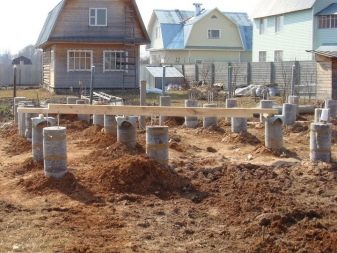

Slab foundation
In the presence of a solid topsoil, which is often found on peatlands and lake residues, it is much more rational to mount a slab foundation. Its main advantage is its high strength and lack of heel even with significant ground deformations or rising groundwater levels.
Such a base is suitable for small frame houses, objects made of foam and aerated concrete.
If we compare the cost of a slab foundation with the cost of erecting a pile analogue, an interesting pattern is again revealed. When building a slab foundation on solid soils, the implementation of this technology will be 40% more expensive than building a pile analogue. If we are talking about erecting a slab on a swampy area, then it turns out that it is 25% cheaper than organizing a pile foundation in the same area.
Installation of a slab base in swampy conditions requires preparation and drainage of the pit with a depth of 60-70 cm, having a layer of sand and crushed stone filling. Around the perimeter of the pit, panel formwork is mounted, and the pit is waterproofed using film materials. Reinforcement is mandatory, which is made using steel rods with a cross section of 12 mm with the installation of crossbars and jumpers. Plates of extruded polystyrene foam (EPP) are used as insulation for the upper part of the slab and its base.

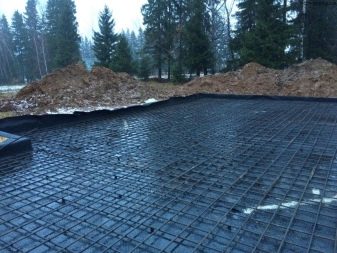
Tips for building a foundation in swampy soil - in the next video.













The comment was sent successfully.